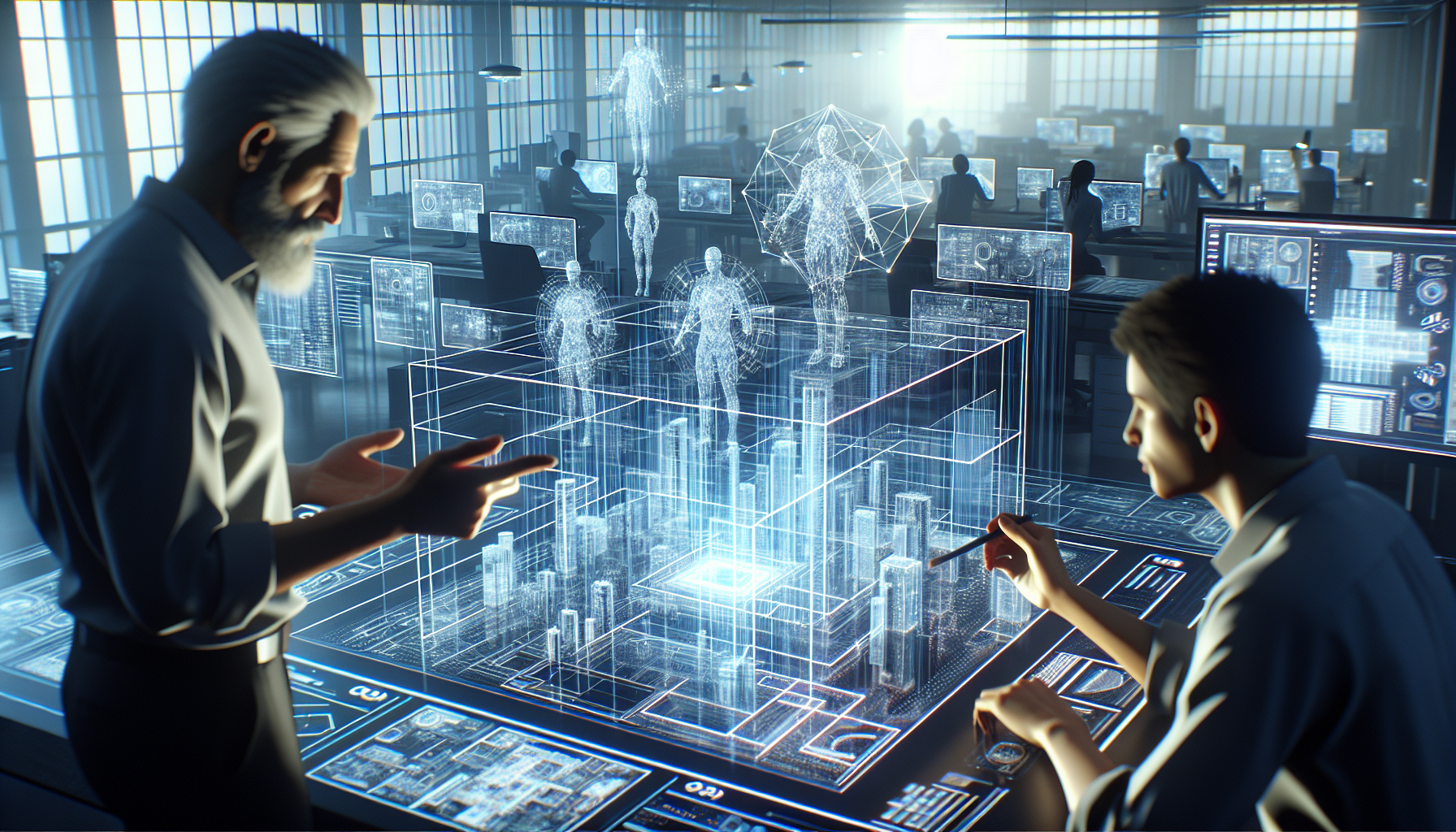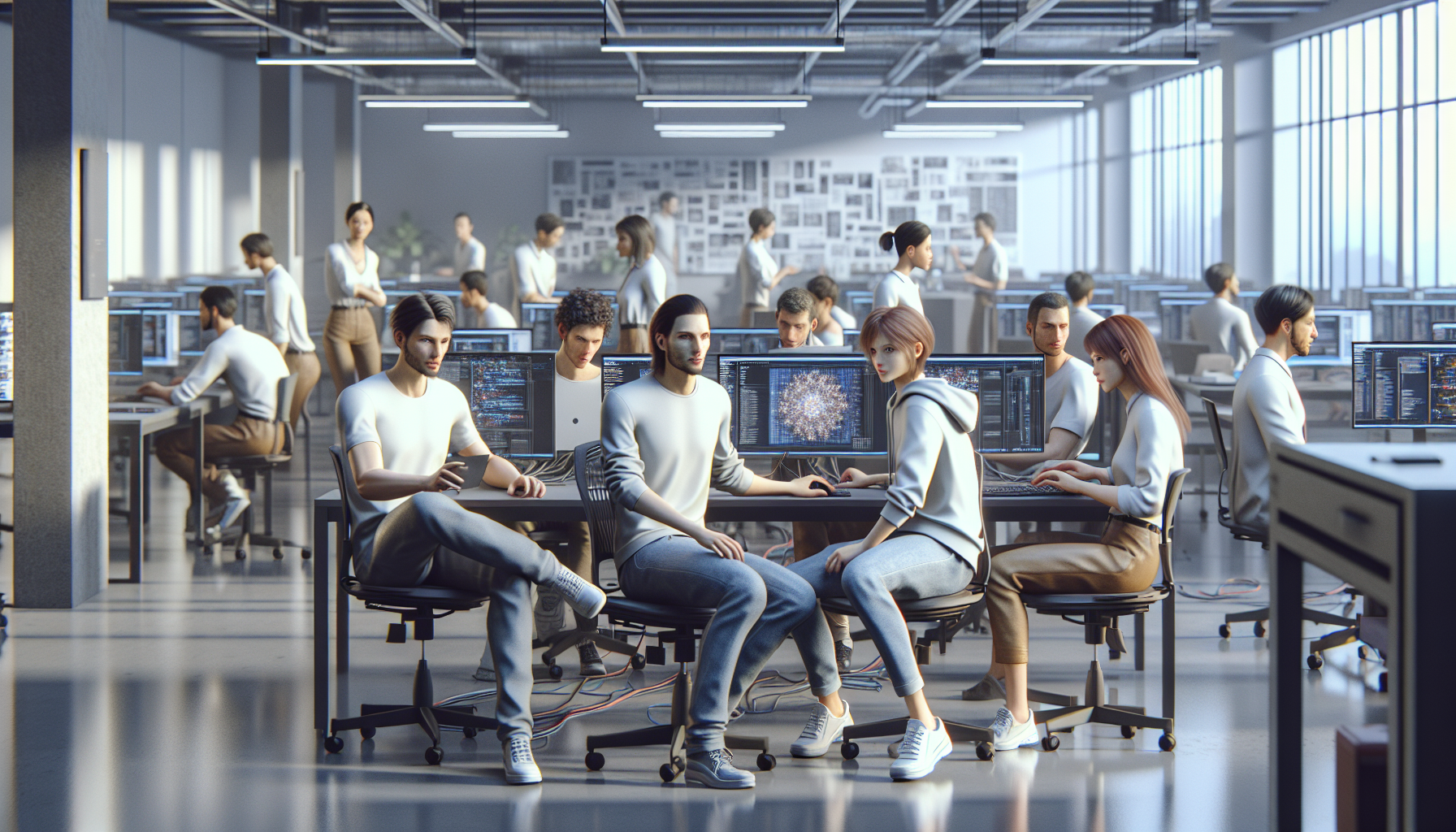Overview of AI-driven Cross-Platform Toolchains
Key Points
- AI tools are revolutionizing game development by enhancing efficiency and creativity.
- These tools help in asset generation, texture creation, and character design.
- AI-driven tools are accessible to both indie developers and larger studios.
- They support various programming languages and integrate seamlessly into existing workflows.
- Community discussions and resources are available for learning and sharing experiences.
Definition and Components of AI-driven Toolchains
AI-driven cross-platform toolchains utilize artificial intelligence (AI) to streamline the development of applications across multiple platforms. These toolchains reduce manual coding, enhance software quality, and improve performance. By leveraging AI, developers can automate repetitive tasks, optimize code, and predict user behavior, leading to more efficient development cycles.
An AI-driven cross-platform toolchain typically includes several key components:
- Integrated development environment (IDE)
- AI-powered code editors
- Compilers
- Debuggers
- Performance analysis tools
The IDE serves as the central hub for coding, testing, and debugging. AI enhancements in the IDE suggest code optimizations, detect potential bugs early, and provide real-time feedback on code quality. AI-powered code editors further automate routine coding tasks and predict developer needs.
In AI-driven toolchains, compilers and debuggers use advanced algorithms to optimize code for different platforms and swiftly identify issues. Performance analysis tools leverage AI to monitor application behavior, suggest enhancements, and ensure the final product is functional and efficient across various platforms.
Challenges in Cross-Platform Development

Compatibility Issues
One of the most significant challenges in cross-platform development is ensuring that applications perform consistently across all targeted platforms. Different operating systems, screen sizes, and hardware capabilities can affect an application’s performance, appearance, and functionality.
Developers must extensively test their applications on multiple devices to ensure compatibility, which can be time-consuming and costly. Moreover, maintaining code that accommodates various platforms can lead to complex and cluttered codebases, making updates and bug fixes more challenging to manage.
Performance Optimization
Another challenge is optimizing performance across diverse platforms. An application that runs smoothly on one device might lag on another due to differences in processing power or memory availability. This issue is particularly prevalent in resource-intensive applications such as games or data-heavy apps.
Developers must implement adaptive code that can scale its performance based on the device’s capabilities. However, writing such adaptive code requires deep knowledge of hardware and software environments, which can be a barrier for many developers.
Solving Compatibility and Performance Issues

Step 1: Utilizing AI for Automated Testing
To address compatibility issues, developers can use AI-driven tools that automate the testing process. These tools can simulate various environments and use cases, quickly identifying compatibility problems without extensive manual testing.
Automated testing not only speeds up the development process but also ensures a more thorough examination of potential issues, reducing the risk of bugs making it to production.
Step 2: Adaptive Code Generation
For performance optimization, AI-driven toolchains can assist in generating adaptive code. These tools analyze the application’s requirements and the target device’s capabilities to produce optimized code that adjusts its behavior based on the device.
This approach allows developers to write a single codebase that performs optimally across all platforms, simplifying maintenance and updates.
Step 3: Continuous Integration and Deployment
Integrating AI-driven toolchains with continuous integration (CI) and deployment (CD) systems can further enhance cross-platform development. These systems automate the build, test, and deployment processes, ensuring that they immediately test and prepare any changes made to the codebase for production.
Additionally, CI/CD systems ensure regular updates and patches, crucial for maintaining performance and compatibility with new devices and OS versions.
Example Code Implementation

The following Python example demonstrates how you can use an AI-driven toolchain to automate compatibility testing across multiple platforms. This script utilizes the Selenium WebDriver for browser automation to test a web application on different devices.
import unittest
from selenium import webdriver
from selenium.webdriver.common.keys import Keys
class CrossPlatformTest(unittest.TestCase):
def setUp(self):
self.driver = webdriver.Chrome()
def test_search_in_python_org(self):
driver = self.driver
driver.get("http://www.python.org")
self.assertIn("Python", driver.title)
elem = driver.find_element_by_name("q")
elem.send_keys("pycon")
elem.send_keys(Keys.RETURN)
assert "No results found." not in driver.page_source
def tearDown(self):
self.driver.close()
if __name__ == "__main__":
unittest.main()
Frequently Asked Questions

What are AI-driven cross-platform toolchains?
AI-driven cross-platform toolchains are integrated sets of development tools that use artificial intelligence to enhance the process of building software that works across multiple platforms. These toolchains help automate tasks like code generation, testing, and optimization, making the development process faster and more efficient.
How do AI-driven toolchains improve software development?
AI-driven toolchains improve software development by automating routine tasks, optimizing code for performance, and providing insights into code quality and compatibility issues. This automation and optimization help developers reduce the time and effort required to develop and maintain software, especially when targeting multiple platforms.
Moreover, these toolchains can predict potential issues before they become problematic, allowing developers to proactively address them, which enhances the overall stability and reliability of the software.
Can AI-driven toolchains be integrated with other development tools?
Yes, AI-driven toolchains can be seamlessly integrated with a wide range of development tools, including version control systems, continuous integration/continuous deployment (CI/CD) platforms, and more. This integration helps create a cohesive development environment that boosts productivity and efficiency.
Integration with these tools allows for a more streamlined workflow where code can be automatically tested, built, and deployed, reducing the chances of human error and increasing the speed of development cycles.
What are the challenges associated with using AI-driven toolchains?
While AI-driven toolchains offer numerous benefits, they also come with challenges such as the need for significant upfront investment in training and integration, and the potential for reduced control over the development process. Developers need to understand the capabilities and limitations of AI tools to effectively integrate them into their workflows.
Additionally, relying on AI could lead to issues if the AI does not adequately understand the nuances of the project or fails to generate code fully optimized for all target platforms. Continuous monitoring and tweaking of AI configurations are essential to ensure optimal performance.
Looking Ahead: The Future of AI in Cross-Platform Development

AI’s role in cross-platform development is expected to grow significantly. Here are five predictions for the future:
- Increased Automation: AI will automate more aspects of the development process, reducing the need for manual coding and testing.
- Enhanced Personalization: AI will enable more personalized user experiences by adapting applications in real-time based on user behavior and preferences.
- Improved Code Quality: AI will enhance code quality by providing real-time feedback and suggestions for improvements, leading to more robust and reliable applications.
- Expansion of AI Capabilities: As AI technology evolves, its capabilities within development toolchains will expand, offering more advanced features and functionalities.
- Greater Integration: AI-driven toolchains will become more integrated with other tech stacks, providing a more unified and efficient development environment.
More Information
- Game developers discuss the best AI tools for game development on Reddit
- GitHub – A curated list of AI tools beneficial for game developers
- 10 Best AI Game Generators (April 2024) – Unite.AI
- 6 Revolutionary Generative AI Tools for Video Game Development | Skippet
- 2023’s Top AI Game Creation Tools: Revolutionizing Game Development
Disclaimer
This article is generated by AI for educational purposes and does not intend to provide specific advice or recommendations for any individual or on any specific software development product. It is only intended to educate about AI-driven cross-platform toolchains. To make the best decisions that suit your own needs, you must conduct your own research and seek the advice of relevant experts if necessary. Always remember to make informed decisions and do your due diligence!
- Analyzing Patterns in Failed Products - July 25, 2024
- Hybrid Cryptographic Systems - July 24, 2024
- Inadequate Threat Intelligence Integration - July 23, 2024
